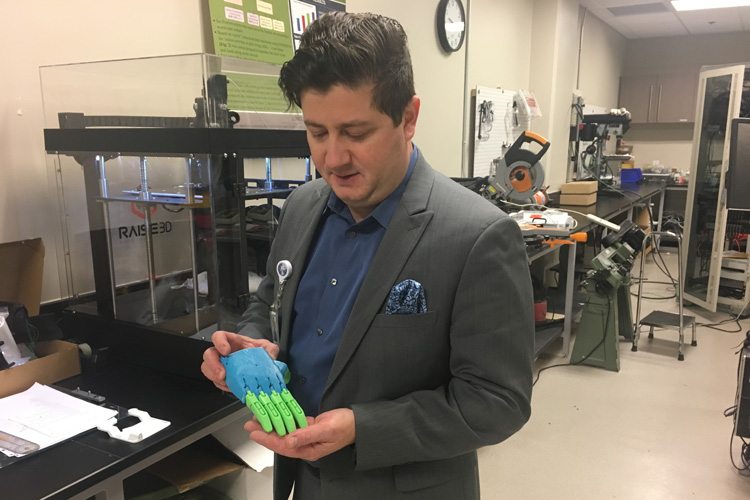When 5-year-old Jacob Taggart woke up on Christmas Day, a special present awaited him.
A hand.
It’s not the usual Lego set or video game console most kids ask Santa for. But for Taggart, who was born with only one finger on his right hand, the prosthetic created possibilities for Jacob that no toy ever could.
He is not alone. According to the Center of Disease Control and Prevention, 1,500 babies are born in the United States each year with an upper limb reduction defect, meaning they’re missing fingers and functionality in their hands.
To help kids like Taggart, the MORE Foundation, a non-profit branch of the CORE Institute, is using 3-D printing to create prosthetic hands, which they give to children in need, in the Phoenix area.
Held open by rubber bands, the plastic hand looks like something straight out of a science fiction movie. And with a simple bend of the wrist, it opens and closes.
“The hand allows kids to do lot of activities of daily life that they weren’t able to do,” Dr. Marc Jacofsky, The CORE Institute’s vice president of research and development, said. “Picking up a ball, throwing a ball, holding a maker and even shaking someone’s hand is all possible.”
The Helping Hands initiative began in 2017, but the MORE Foundation quickly secured all the money they needed through fundraising. The $10,000 raised allowed Jacofsky and his team to purchase the 3-D printer.
“Within the year of 2017, we launched the program, raised the money, trained our staff, found our first recipient and made the hand,” Jacofsky said.
The recipient was Taggart.
“It’s something that he can share with others and show how it works instead of answering questions about what happed to his hand,” his sister, Deja Taggart, said. “It has significantly improved his self-esteem and self-confidence.”
The 3-D printer makes it possible to produce prosthetics inexpensively. That’s important because children grow at such a fast rate and will require new hands as they age.
“As of now, any child with the medical need qualifies,” Jacofsky said.
In 2018, the MORE foundation plans on giving 100 hands, all for free. Each one will fit the specific needs of its recipient.
“We’re in the process, right now, of customizing a hand for a girl who swims,” Jacofsky said. “It will have this cup shape that can break through the water.”
While the prosthetic helps Taggart with activities, like catching a ball or riding a bike, his sister said he doesn’t use the hand for fine motor skills.
But prompted by the motto “keep life in motion,” the MORE Foundation remains committed to improving the hands and advancing prosthetics.
“We’re always looking on ways to make (the hands) work better,” Aniruddh Nayak, the director of biomechanics research at the CORE Institute, said. “I don’t just want to see the kids hold a pencil. I want them to write well with one.”
Only two prosthetics have been delivered, so far. But more than 13 children are scheduled to receive theirs soon.




